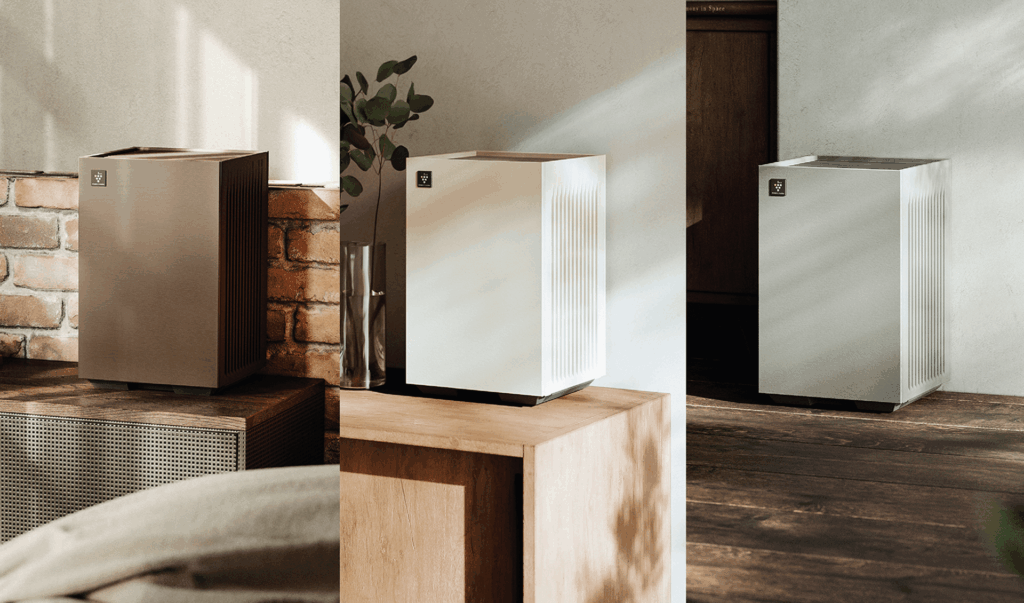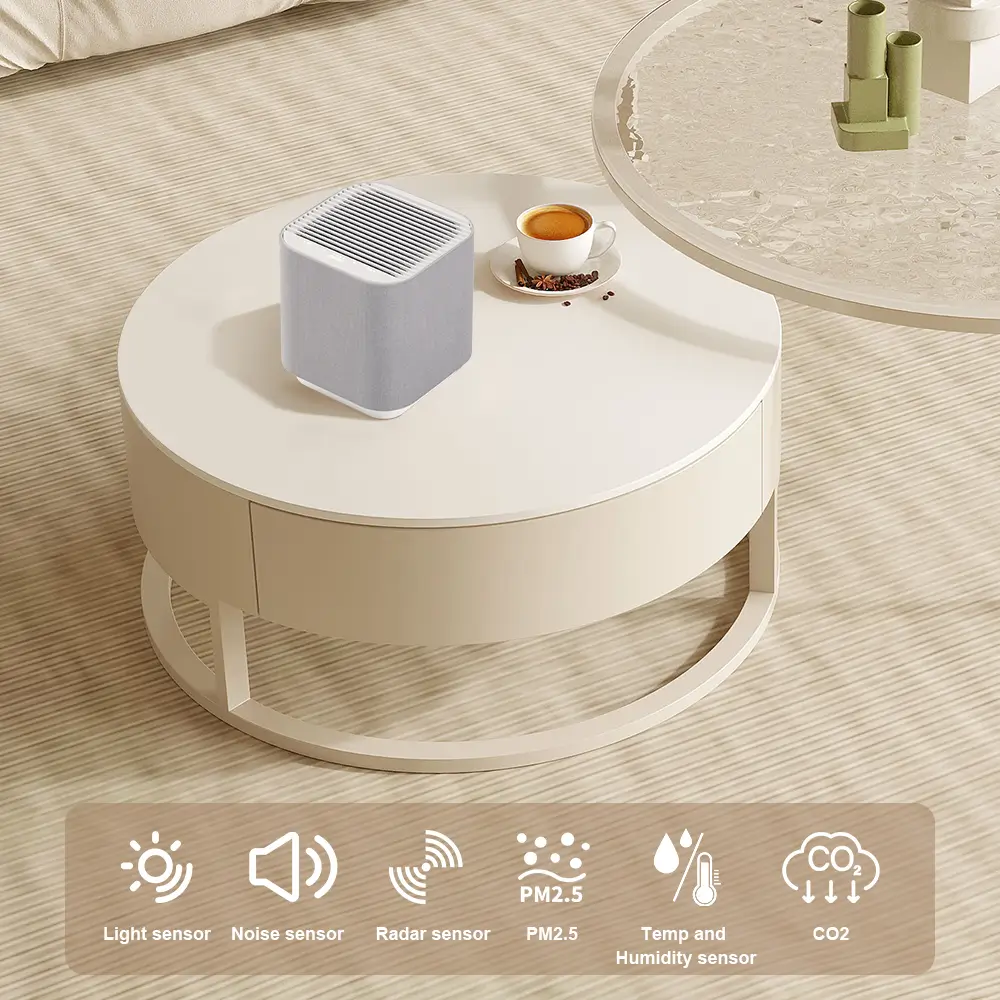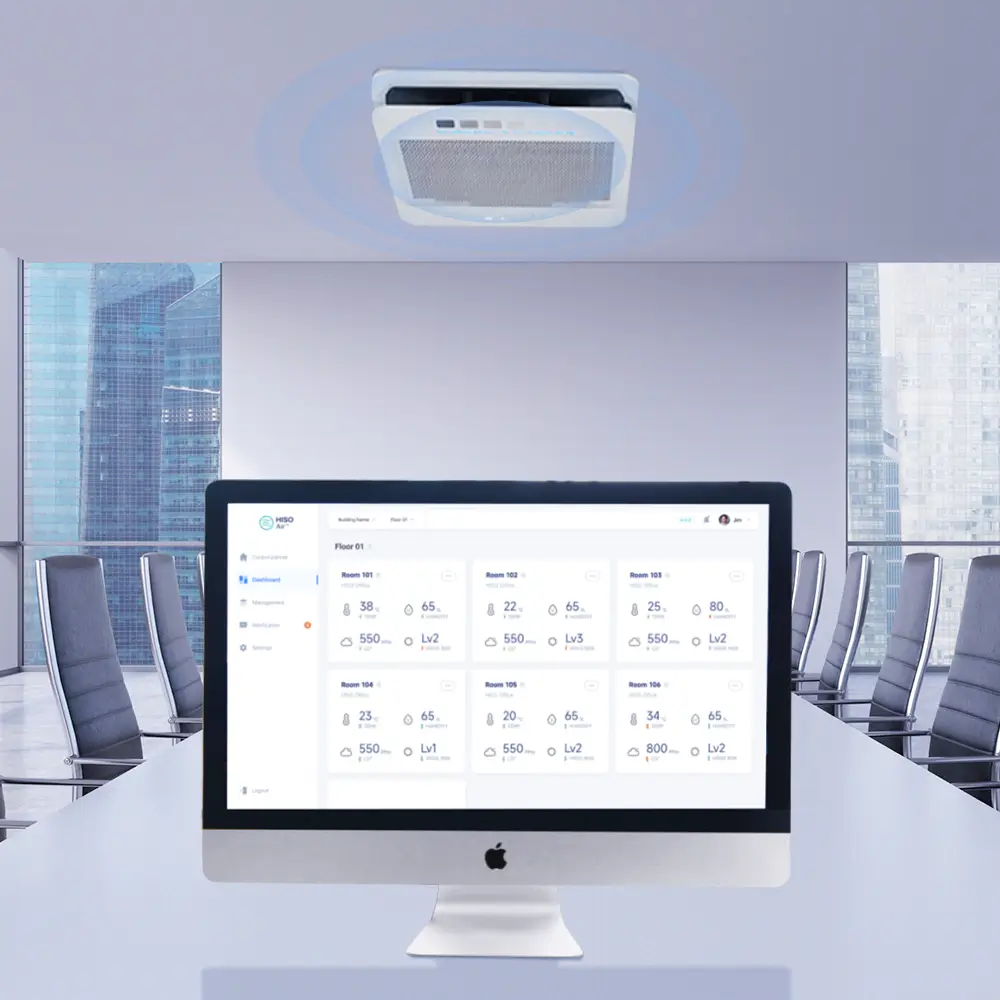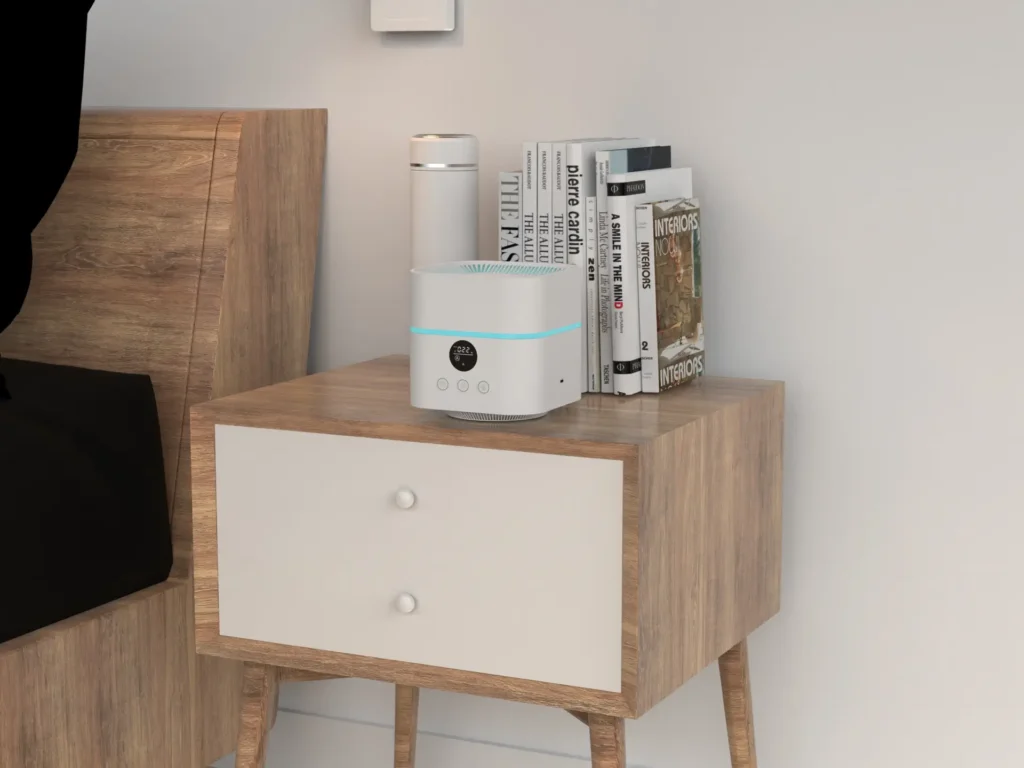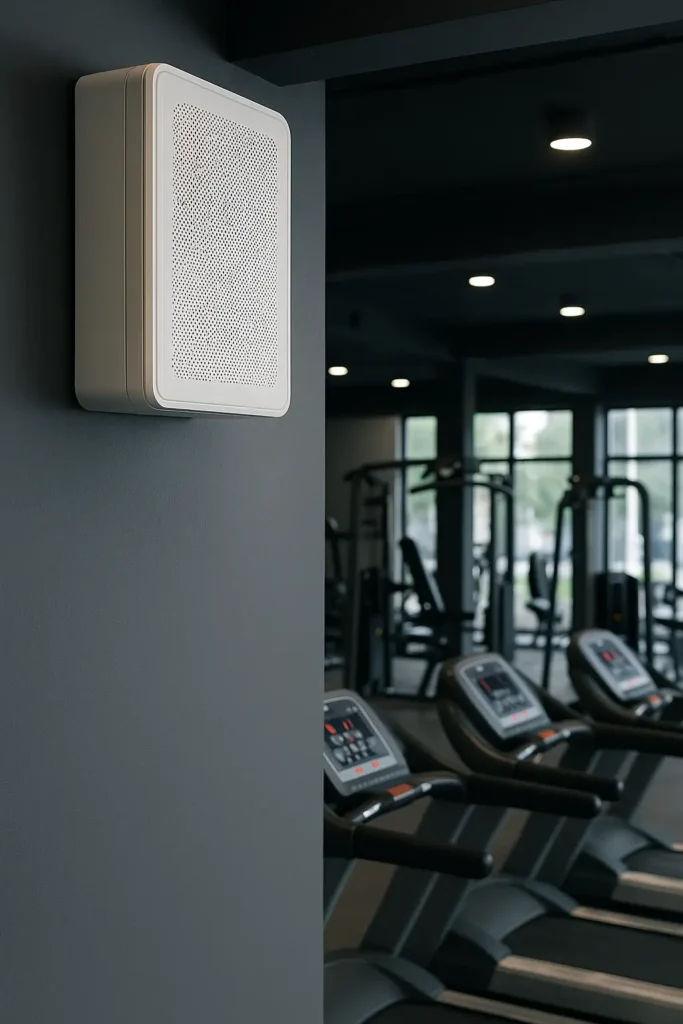
私たちがどれほどきれいな空気に依存しているか、考えたことがあるだろうか。空気清浄機ビジネスへの旅に出た私は、単に製品を売るということではなく、人々の生活を向上させるということを発見した。
空気清浄機事業の立ち上げを成功させるには、まず包括的な市場調査を実施し、ギャップと機会を特定することから始める。経験豊富なメーカーと協力し、製品のイノベーションに注力し、ニッチ市場をターゲットとした戦略的マーケティングプランを考案する。
これらの最初のステップは強力な土台を築くものであるが、次のセクションでは、空気清浄機業界における長期的な成功を確実なものとするための、ブランド構築、製品開発、財務計画に関する重要な戦略を探る。
空気清浄機事業を立ち上げるには、市場調査が欠かせない。真
市場調査は機会とギャップを特定し、戦略を導く。
空気清浄機分野の市場機会を見極めるには?
空気清浄機分野で市場機会を発掘するには、戦略的調査と革新的思考が必要だ。
現在のトレンドを分析し、消費者ニーズを評価し、技術の進歩を調べることによって、市場機会を特定する。業界の専門家と協力して洞察力を高め、市場のギャップを探る。

市場動向の把握
機会を見極めるには、まず次のような分析から始める。 トレンド1 空気清浄機市場都市化の進展、健康志向の高まり、大気汚染に対する意識の高まりといった要因を考慮する。こうした傾向は、需要が満たされていない地域や、空気清浄ソリューションの恩恵を受けそうな新興市場を示す可能性がある。
消費者ニーズ調査
消費者のニーズを把握することは非常に重要です。アンケート調査やフォーカス・グループを実施し、消費者が空気清浄機で最も重視する機能は何かについてのデータを収集する。 CADR (清浄空気排出率)、騒音レベル、および PM2.5 センサーを使用する。この情報は、特定のニーズを満たすために製品を調整するのに役立ち、その結果、市場の狙ったセグメントを獲得することができる。
技術の進歩
この分野の技術の進歩に常にアンテナを張ること。例えば、スマートセンサーやエネルギー効率の高いモデルなどのイノベーションは、競争力を高めることができます。リサーチ 革新的技術2 業界を変革しているものを取り上げ、それらをどのように自社の製品に統合できるかを検討する。
業界エキスパートとのコラボレーション
業界の専門家と連携し、市場ギャップに関する洞察を得る。信頼できる経験豊富なメーカーは、サプライチェーンの力学や市場内の潜在的なニッチに関する貴重な情報を提供してくれる。 専門家への相談3 彼らの知識と経験を活用することで、ビジネス戦略を洗練させることができます。
市場ギャップ分析
徹底的な分析を行い、需要と供給のギャップを見つける。空気清浄ソリューションの恩恵を受ける可能性のある、十分なサービスを受けていない地域や人口層を特定する。各地域の空気品質指数や、需要に影響を与える可能性のある規制政策などの要因を検討する。
MVPによるパイロットテスト
最後に、市場の反応をテストするために、MVP(Minimum Viable Product)を発表することを検討する。少量の試用注文は、消費者の嗜好を理解し、本格的な発売前に製品を微調整するのに役立つ、重要なフィードバックを提供することができます。
都市化が空気清浄機の需要を牽引。真
都市化の進展は汚染レベルの上昇につながり、空気清浄機の売上を押し上げる。
騒音レベルは、空気清浄機における消費者の最大の関心事である。偽
消費者は空気清浄機において、騒音レベルよりも清浄空気供給率を優先する。
空気清浄機を設計する際に重視すべき機能とは?
効果的な空気清浄機を設計するには、最適な性能とユーザーの満足度を確保するために、必要不可欠な機能に焦点を絞る必要がある。
空気清浄機を設計する際には、次のような主要機能に注目する。 CADRまた、騒音レベル、スマート・センサーにより、効率とユーザー・エクスペリエンスを向上させることができる。
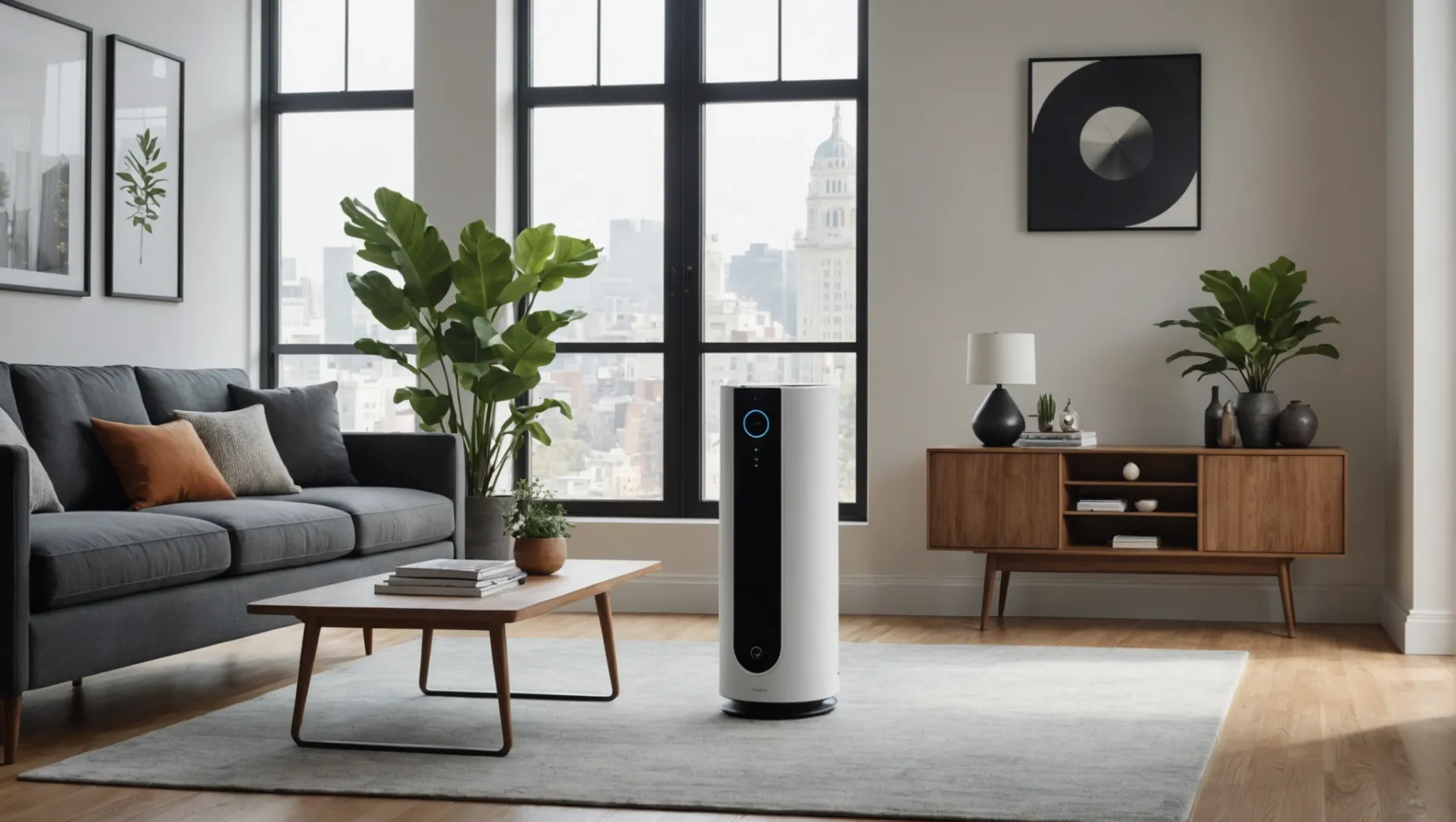
理解する CADR その重要性
クリーンエア供給率(CADR)は、空気清浄機が特定の空間内の空気をどの程度清浄するかを示す重要な指標である。これは、1分間に生成される清浄な空気の量を測定するもので、値が大きいほど性能が高いことを意味する。消費者の期待に応えるには CADR 格付け4 部屋のサイズに合った
騒音レベル静かな運転の実現
騒音はユーザーの満足度に大きく影響します。特に寝室やオフィスでは、消費者は静かに作動する機器を好むことが多い。清浄機が日常生活や睡眠の妨げにならないよう、騒音レベルは50デシベル以下を目指しましょう。
スマートセンサーの統合
以下のようなスマートセンサー PM2.5 センサーは、粒子状物質を検出し、浄化設定を自動的に調整する能力により、ますます人気が高まっている。これらのセンサーは、ユーザーの利便性を向上させ、リアルタイムの空気品質状況に対応することで、装置の効率的な動作を保証する。
エネルギー効率:持続可能なアプローチ
エネルギー効率の高い技術を取り入れることは、環境に配慮しているだけでなく、コスト意識の高い消費者にとっても魅力的である。光熱費の削減と環境負荷の低減を購入者に保証するために、エネルギー効率の高い認証を探しましょう。
美的および機能的デザインへの配慮
優れたデザインの空気清浄機は、使いやすさを保ちながら、環境にシームレスに溶け込むものでなければならない。直感的に操作できる洗練されたデザインと、多様な消費者の好みに応えるカスタマイズ・オプションを検討しよう。
建物の信頼性と耐久性
消費者は、長寿命で安定した性能を提供する製品を求める。高品質の素材と堅牢な構造技術を優先させる。また、保証を提供することで、製品の信頼性に対する消費者の信頼を高めることができる。
これらの特徴に注目することで、設計者は目の肥えた市場の要求を満たす空気清浄機を作ることができ、機能性とユーザーの満足度の両方を確保することができる。
空気清浄機はCADRが200以上でなければならない。偽
CADRは部屋の大きさに合わせるべきで、必ずしも200以上である必要はない。
スマートセンサーが空気の質に応じて空気清浄機を調整する。真
スマートセンサーが粒子を検知し、設定を自動調整。
空気清浄機ビジネスに適したメーカーを選ぶには?
空気清浄機ビジネスを成功させるには、最適なメーカーを選ぶことが重要です。
まず、経験、評判、製品の品質に基づいてメーカーを評価することから始めましょう。生産能力、業界標準への準拠、技術革新能力などの要素も考慮しましょう。適切なメーカーとの戦略的パートナーシップは、ビジネスの成長と持続可能性に大きな影響を与えます。

メーカーの経験と評判を評価する
空気清浄機ビジネスのためにメーカーを選択する場合、まずそのメーカーの評価から始めましょう。 業界経験5.実績のあるメーカーは、高品質の製品を生産し、業界標準を満たす可能性が高い。評判は、過去の顧客からのレビュー、証言、事例研究によって測ることができる。
製品の品質と革新性の評価
メーカーが製造する空気清浄機の品質は譲れない。サンプルを要求して、以下のようなパラメーターをテストする。 CADR (清浄空気排出率)、騒音レベル、および PM2.5 センサーの精度。さらに、そのメーカーが技術革新の歴史を持っているかどうか、また、そのメーカーが次の世代に先んじるために研究開発に投資しているかどうかも調査してください。 技術動向6 空気浄化において。
| 基準 | 説明 | 重要性 |
|---|---|---|
| CADR | 1分間に送り出される清浄空気の量を測定する。 | 高い |
| 騒音レベル | 装置の静粛性を示す。 | ミディアム |
| PM2.5 センサー | 大気質評価のための微小粒子状物質を検出。 | 高い |
業界標準へのコンプライアンスの確保
ISOやAHAMのような国際規格への準拠は、メーカーを選択する際の際立った要素となり得る。これらの認証は、製品が安全性と性能のベンチマークを満たしていることを保証します。潜在的な製造パートナーがこれらの規格を遵守していることを確認してください。
生産能力と柔軟性を理解する
メーカーの生産能力が貴社のビジネス・ニーズに合致しているかどうかを分析する。これには、需要急増時に生産規模を拡大する能力も含まれます。また、柔軟性も重要です。顧客のフィードバックに基づくカスタムデザインや修正に対応できるかどうかを検討しましょう。
戦略的パートナーシップの構築
理想的なメーカーは、単なるサプライヤーではなく、戦略的パートナーとして見なされるべきです。空気清浄機市場に対する彼らの洞察力は非常に貴重であり、新たなトレンドに関するガイダンスを提供し、顧客のニーズをよりよく満たすために製品を改良するのに役立ちます。
メーカーの評判は、レビューによって測られる。真
レビュー、お客様の声、ケーススタディは、評判を評価するのに役立ちます。
空気清浄機メーカーにとってISO認証は無関係である。偽
ISOは安全性と性能の基準を満たすことを保証する。
空気清浄機ブランドを高める効果的なマーケティング戦略とは?
競争の激しい空気清浄機市場で頭角を現すには、革新的で的を絞ったマーケティング戦略が必要だ。
空気清浄機のブランド力を高めるには、デジタル・マーケティングを活用し、ニッチな顧客層を取り込み、ユニークな製品の特徴を強調することが必要です。これらの戦略は、混雑した市場でブランドを差別化し、忠実な顧客を引き付けるのに役立ちます。

ターゲットオーディエンスを理解する
空気清浄機ブランドを効果的に売り込むには、まず理想的な顧客を特定することから始めましょう。健康志向の個人、親、テクノロジーに精通したミレニアル世代でしょうか?アンケートを実施し、データ分析を使って彼らの嗜好や行動を理解しましょう。これらのグループに響くようにマーケティング・メッセージを調整することで、ブランドの魅力を大幅に高めることができます。
デジタル・マーケティング・チャネルの活用
デジタルの時代には、オンラインで確固たる存在感を示すことが重要です。活用する 検索エンジン最適化7 (SEO)を使って、検索エンジンでのウェブサイトの可視性を向上させることができます。空気清浄機を積極的に検索している潜在顧客にリーチするために、クリック課金型広告に投資しましょう。InstagramやFacebookなどのソーシャルメディアプラットフォームは、魅力的なコンテンツやプロモーションを通じて製品を紹介する絶好の機会を提供します。フォロワーにブランドを正当に宣伝できるインフルエンサーと協力しましょう。
ユニークな製品の特徴に注目する
空気清浄機のユニークな特徴を強調することで、ブランドを差別化しましょう。高度なろ過技術、低騒音レベル、エネルギー効率など、マーケティングキャンペーンでこれらの利点を強調しましょう。以下のような有益なコンテンツを作成しましょう。 比較表8 といったビデオで、御社の製品がいかに競合他社より優れているかをアピールしてください。
ニッチ市場と関わる
ニッチ市場をターゲットにする。例えば、アレルギーを持つ人やペットを飼っている人に特化したキャンペーンを展開する。このような集中的なアプローチは、あなたのブランドが彼ら独自のニーズに合わせたソリューションであると考える忠実な顧客ベースを構築するのに役立ちます。
顧客からのフィードバックの活用
製品やサービスを継続的に改善するために、顧客からのフィードバックを積極的に求め、活用する。AmazonやGoogleのようなプラットフォームでのレビューや証言を奨励する。肯定的なフィードバックは、ブランドの信頼と信用を築く強力なツールとなります。顧客からの問い合わせや苦情に迅速に対応することも、顧客満足へのコミットメントを示すことになる。
強力なブランド・アイデンティティの確立
説得力のあるブランド・ストーリーとアイデンティティを構築することは、差別化に不可欠です。製品パッケージからソーシャルメディアへの投稿まで、すべてのチャネルで一貫したブランディングを徹底しましょう。強力なブランド・アイデンティティは、消費者に製品を覚えてもらい、品質と信頼性を連想させるのに役立ちます。
SEOは空気清浄機ブランドの認知度を向上させます。真
SEOはオンラインでの存在感を高め、より多くの潜在顧客を惹きつける。
ニッチ市場を無視することは、ブランド・ロイヤルティを高める。偽
ニッチ市場をターゲットにすることで、忠実な顧客ベースを築くことができる。
結論
以下の戦略的ステップに従うことで、空気清浄機ビジネスを成功に導くことができます。この競争の激しい業界で成功するために、革新的であり続け、顧客のニーズに応え、市場の動向に敏感であり続けましょう。
-
市場ダイナミクスを探り、新たなビジネスチャンスを発見する:空気清浄機市場は2024年に168.3億ドルに達し、年平均成長率7%で2029年には236.0億ドルに達すると予測される。シャープ株式会社、IQAir ... ↩
-
製品提供を強化する最先端技術をご覧ください:Brioは、特許取得済みの静電沈殿法であるAPARTを使用し、気流を減少させることなく粒子を除去・捕捉して空気を浄化します。APART ... ↩
-
ビジネス上の意思決定に役立つ戦略的洞察を得る:専門家に相談することで、特定のニーズに合ったHEPA空気清浄機を確実に選ぶことができます。専門家は様々な要素を考慮します。 ↩
-
空気清浄機の効果を評価するCADRの役割を理解する..:CADR(Clean Air Delivery Rate)は、家庭用空気清浄機の性能を測定する方法として開発された指標です。 ↩
-
品質保証と信頼性に経験が重要な理由とは?Ecosystmの調査によると、技術分野によっては業界での経験がベンダー選定の重要な基準になることが分かっています。 ↩
-
競争力のある製品を提供するための技術革新を常に更新:UVGI空気浄化技術紫外線殺菌照射(UVGI)は、UV-Cを放出することで大気を殺菌する空気浄化技術です。 ↩
-
効果的なSEOテクニックを学んで、オンラインでの知名度を高めよう:SEOのベストプラクティスを実践した結果、主要なブランドキーワードの検索順位が向上した。エアリス 空気清浄機」、「エアリス ... ↩
-
比較表がどのように製品の利点を強調するかを理解する:これにより、異なるユニット間で1つの数値(CFM)を比較することができ、空気清浄機の実際の処理能力についてより良いアイデアを得ることができます。* ... ↩


